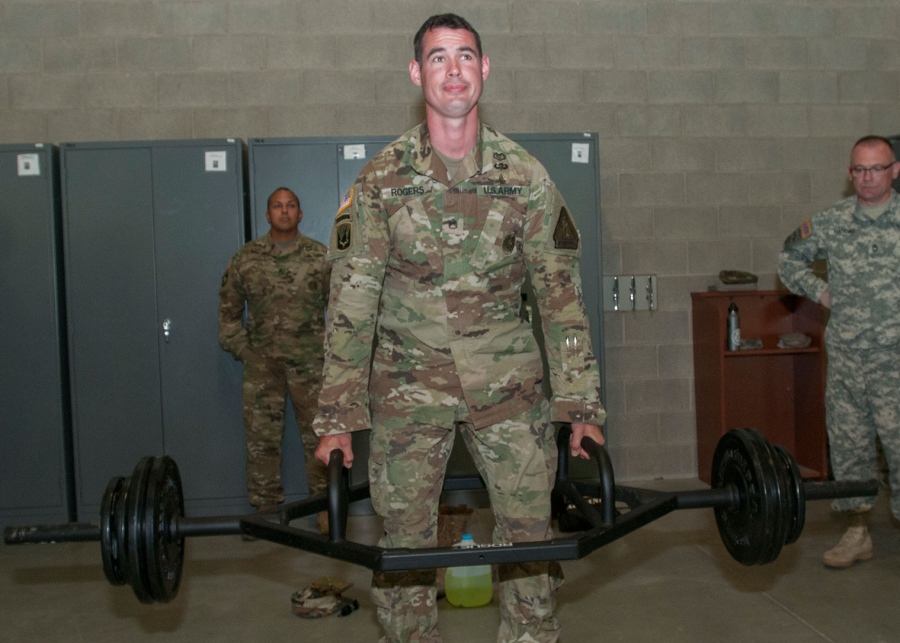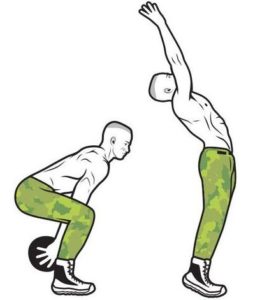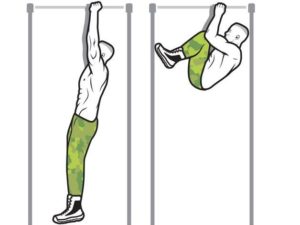The US Army Combat Fitness Test – Up for It?
If you wanted to enlist in the US Army you’d be expected to be fit. Very fit. Once you’d been accepted, you’d get more than enough training to increase your fitness, but you’d be expected to reach a certain level of fitness to even have your application take seriously. In September of 2018 the US Army introduced a new test in their revised ACFT Field Testing Manual. It’s called the Army Combat Fitness Test, and it is due to be implemented in mid-2020.
Six tests of fitness and strength are included, and there are very strict guidelines for each one. So take a look at them and consider this question … could you pass the test?

Deadlift
This test is very simple; it involves a 3-Rep deadlift with no rest. You are expected to lift the maximum you are able for three reps with no rest.
According to the Manual, “If the soldier fails to complete three continuous repetitions under control, he or she is permitted one retest at a lower weight after a rest of up to two minutes.”

You would only be allowed two attempts to reach your 3-Rep max, so you’d have to start with a very respectable weight and then increase it if you thought you could lift more, or decrease it if it proved to be too heavy on the day. And the Manual allows you to go higher if your 3-Rep max is completed successfully: “If the Soldier successfully completes three continuous repetitions on the first attempt, he or she may elect an additional attempt at a higher weight after a rest of up to two minutes.”
The deadlift is a very good indicator of overall strength, since it is a full-body exercise and requires a high level of strength in the whole body together with good execution and coordination.
 Power throw
Power throw
To successfully complete the power throw you would have to hurl and 4.5kg (10lb) medicine ball over your head behind you for the maximum distance possible. You would only be allowed two attempts, following one practice throw.
If you step over the line due to momentum or lack of control that particular throw will be disqualified, regardless of the distance reached.
Again, this is a very good test of overall strength and coordination.
Hand-release press up
It’s generally assumed this means that you release your hands from the floor at the top of the movement, but actually it’s at the bottom. This allows for a full range of motion and it’s a way of standardising the press ups; each one starts from exactly the same position as the last.
You would have two minutes to complete the maximum number possible in the time allowed. But there are strict guidelines (as usual). A rep will not count if
- even one index finger is outside the outer edge of the shoulder
- the feet are more than a boot-width apart
- the soldier fails to simultaneously raise the shoulders and hips (the whole body) off the ground in a generally straight body alignment from the top of the head to the ankles
- the soldier bends or sags at the shoulders, hips, knees while in the front leaning rest position
Also, “This test will also be ‘terminated’ if a soldier lifts a foot or hand off the ground.”
The push-up is included in testing as it “represents repetitive and sustained pushing used in combat tasks.”
Here’s how it’s supposed to be done:
- Start by lying face down on the floor, you body straight and rigid. Have your hands in the press up position, hands flat on the floor, either side of your chest.
- Now raise your hands an inch or so, releasing them from the floor. Immediately place them back down flat and push up.
- Make sure your hips and your chest rise up at the same rate, keeping your back flat throughout.
- Rise to full elbow lockout position. Immediately lower your body, keeping it straight, and as soon as your body touches the floor release your hands from the floor and start the next rep.
Sprint-drag-carry
This is a combination of several tests in one, and tests muscular strength and endurance, together with the ability to cope in combat situations that last from seconds to minutes. As the Manual says, “This capacity contributes to a soldier’s ability to react quickly to direct and indirect fire, build a hasty fighting position, and extract a casualty from a vehicle and carry them to safety,”
You would have to do the following five sprints for time on a 25m track:
- 50m sprint
- 50m 40kg sled drag (backwards)
- 50m lateral shuffle
- 50m farmer’s carry of two 18kg kettle bells
- 50m sprint
Leg Tuck
 You would start by hanging from a parallel bar, feet off the ground, and then do as many knee-tucks as possible in two minutes.
You would start by hanging from a parallel bar, feet off the ground, and then do as many knee-tucks as possible in two minutes.
These must be strict (I know, you guessed that, right?), without any swinging at all, and the knees must touch the elbows on reach rep. Anytime the knees fail to touch the elbows will result in a ‘no-rep’.
If the soldier drops from the bar and touches the ground, the test finishes immediately. The score is how many you can manage in the two minutes allowed, or alternately the number of reps you managed before touching the floor.
The Manual says, “These movements assist soldiers in all climbing tasks and in surmounting obstacles like a vertical wall, or climbing onto a shelf or up a rope.”
2-mile run (3.2km)
This run will be against the clock, obviously, and done just five minutes after the leg-tuck test, so you would have to get prepared very quickly and take a few good, deep breaths before setting out. The Manual comments, “It applies to common soldier tasks such as dismounted movement, ruck marching, and infiltration.”
Your mission …
Your mission, should you decide to accept it, is to carefully consider whether you might be fit enough to pass the ACFT Test. If not :), might I suggest that you take a long, hard look at your training routine and see what measures you need to take to improve it. The US Army will not accept unfit persons for enlistment.
Okay, stand at … EASE!
This web page will self-destruct in five seconds …
STEP AWAY FROM YOUR SCREEN NOW!
